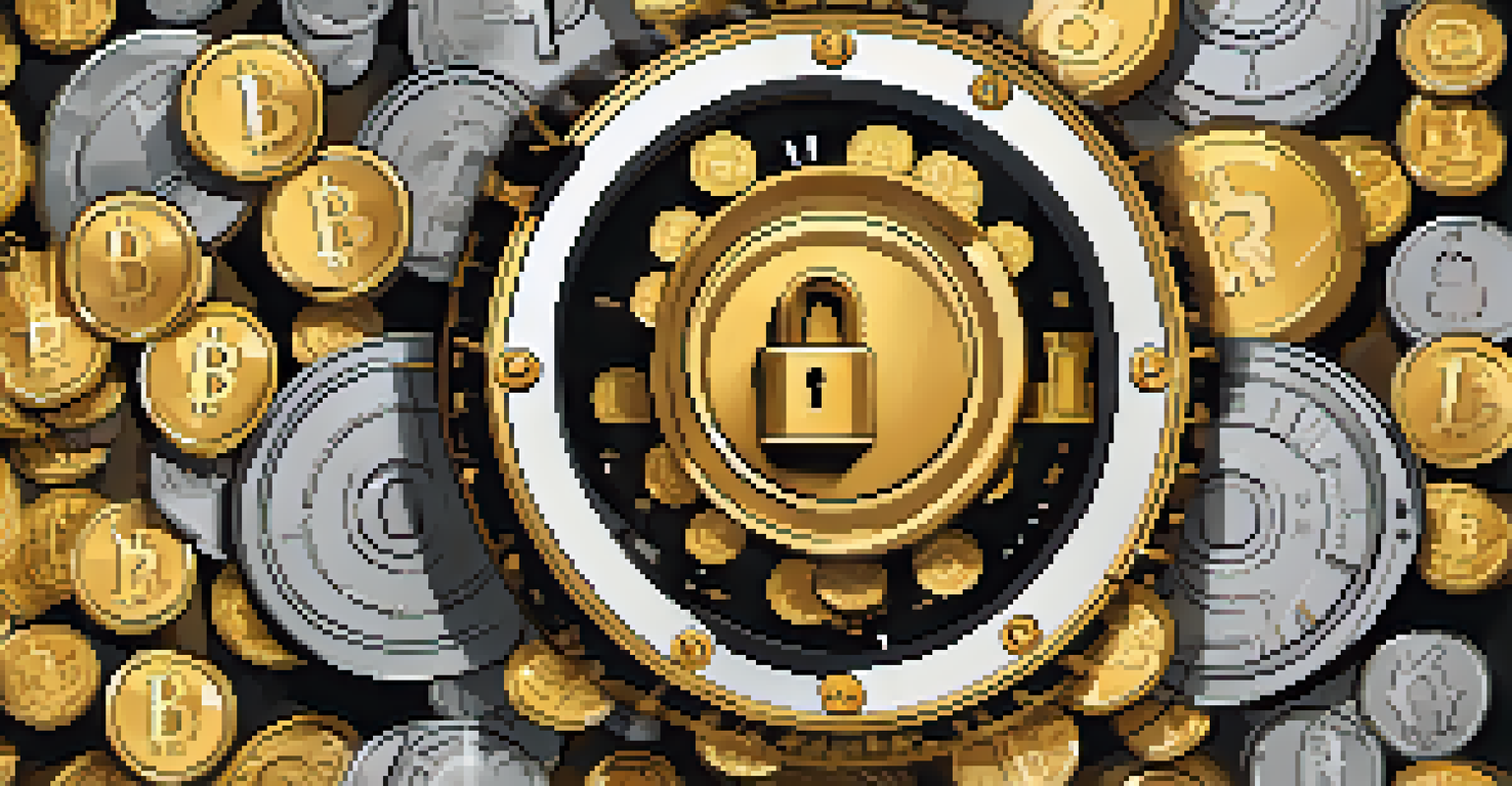Risks of Staking: What You Need to Consider Before You Stake

What is Staking and Why It Matters
Staking is a process where you lock up your cryptocurrency to support blockchain operations, like validating transactions. In return, you earn rewards, typically in the form of more cryptocurrency. It's become a popular way to earn passive income in the crypto world, but it’s not without its risks.
In investing, what is comfortable is rarely profitable.
The appeal of staking lies in the potential for high returns, but understanding what you're getting into is crucial. Many people jump in without fully grasping the mechanics and implications. This lack of knowledge can lead to unexpected losses, so let's dive deeper into the risks involved.
Just like any investment, staking requires a careful approach. Being informed can make all the difference between enjoying the benefits of staking and facing significant setbacks.
Market Volatility: A Double-Edged Sword
One of the biggest risks of staking is market volatility. The cryptocurrency market is notorious for its price swings, which can drastically affect the value of your staked assets. While you may earn rewards, the underlying asset might lose value, negating those gains.

For instance, if you stake a coin worth $100 and it drops to $50, the rewards you earned may not compensate for the loss in value. It's essential to consider the long-term potential of the asset you're staking rather than getting caught up in short-term price movements.
Understanding Staking Risks
Staking can yield rewards, but it's essential to grasp the associated risks to avoid unexpected losses.
Staking can be a risky endeavor if you aren’t prepared for these fluctuations. An effective strategy involves not just staking but also keeping an eye on market trends and developments.
Lock-Up Periods: Limited Access to Your Funds
Many staking protocols come with lock-up periods, meaning your funds are inaccessible for a set duration. This can be a significant drawback, especially if you need to liquidate your assets quickly. Your capital is tied up, and you may miss out on other investment opportunities.
Risk comes from not knowing what you're doing.
Imagine having your money locked away just when a better investment comes along. This can be frustrating and may lead to missed chances for higher returns. Always check the terms of any staking program to understand how long your investment will be locked in.
Being aware of these lock-up periods helps you strategize better. It’s crucial to align your liquidity needs with the staking options you choose.
Network Risks: The Danger of Protocol Failures
Staking involves sending your assets to a blockchain network, and with that comes the risk of network failures or bugs. If the underlying technology has vulnerabilities, it could put your staked assets at risk. These failures can lead to losses that may not be recoverable.
For example, if a network undergoes a critical failure, stakers might find their rewards diminished or even their original stake lost. This highlights the importance of choosing established and reputable networks to stake your assets.
Market Volatility Impact
Fluctuations in the cryptocurrency market can affect the value of staked assets, potentially negating earned rewards.
Staying informed about the technology behind the staking process can help you mitigate these risks. Always do thorough research on the protocols you decide to invest in.
Validator Risks: Choosing the Right Staking Partner
When you stake, you often rely on validators to maintain the network. However, if you choose an unreliable or malicious validator, your rewards may suffer, or worse, you could lose your staked assets. This makes it essential to conduct due diligence when selecting a validator.
Think of validators like the custodians of your investment; if they don’t perform well, your returns can take a significant hit. Look for validators with a strong track record, positive reviews, and transparency in their operations.
Choosing the right validator is critical in safeguarding your investment. Take your time to assess your options before committing your assets.
Regulatory Risks: Navigating Uncertain Waters
The regulatory landscape for cryptocurrencies is constantly evolving, and staking is no exception. Changes in laws or regulations can impact the viability of staking or your ability to access your funds. It’s important to stay updated on any regulatory news that could affect your investments.
For instance, if a country decides to impose strict regulations on staking, it could lead to sudden changes in the market. Being caught off guard by such developments can lead to financial losses.
Choosing Reliable Validators
Selecting trustworthy validators is crucial, as their performance directly impacts your staking rewards and the safety of your assets.
To protect yourself, keep an eye on the legal environment surrounding cryptocurrencies. Being proactive can help you make informed decisions about your staking strategy.
Emotional Risks: The Psychological Toll
Investing in cryptocurrencies, including staking, can take an emotional toll. The fear of losing money or missing out on potential gains can lead to poor decision-making. It’s easy to get swept up in the excitement or panic of the market, which can cloud your judgment.
Consider this: a rollercoaster ride of emotions can lead to hasty decisions, like withdrawing your stake at a loss during a temporary dip. It's essential to cultivate a level-headed approach to investing, especially in the volatile crypto space.

Emotional resilience is important in navigating the ups and downs of staking. Develop a strategy that includes risk management techniques to help you stay focused and calm.
Weighing the Risks: Making Informed Decisions
Ultimately, staking can be a rewarding venture if approached with caution. Understanding the various risks involved allows you to make informed decisions that align with your investment goals. It’s not just about the potential rewards; it’s about knowing what you stand to lose as well.
Take the time to evaluate your risk tolerance, research your options, and develop a clear staking strategy. Engaging with the community, reading up on market trends, and learning from others’ experiences can also provide valuable insights.
By weighing the risks and benefits carefully, you can navigate the staking landscape with confidence. Remember, informed choices pave the way for sustainable investment success.